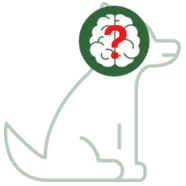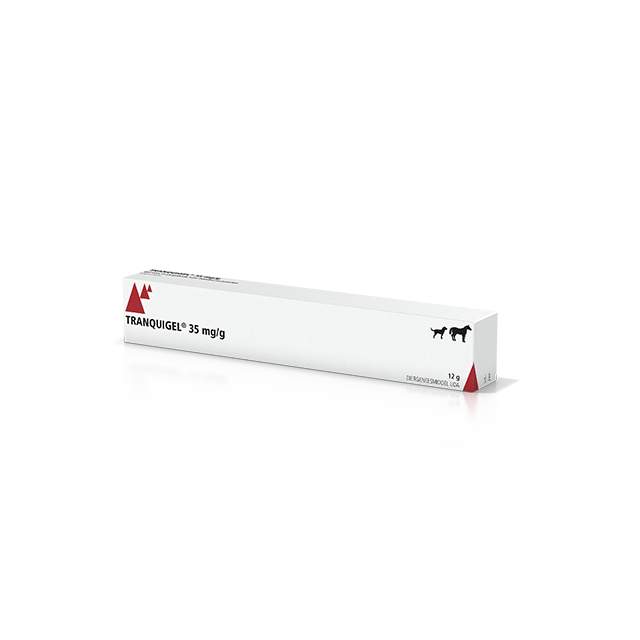The nervous system of the dog
The nervous system of dogs consists of the brain, the spinal cord, and the nerves. The nervous system controls virtually all functions in the body. It enables your dog to walk, his heart to beat, to swallow, and to hold his urine. Disorders of the nervous system can vary widely in their manifestations. The dog may exhibit abnormal behavior, but also drag a foot. When there is a "short circuit" in the brain, it manifests as epilepsy, and if certain nerve pathways are severely disrupted, a dog may become paralyzed. Monitoring by the veterinarian is therefore always important if a dog exhibits abnormal behavior or movements.
Symptoms of nervous system disorders in dogs
Because the nervous system is such a comprehensive organ and controls virtually all bodily functions, the symptoms of neurological disorders, also known as disorders of the nervous system, can be very diverse. Very clear and well-known symptoms include:
- Epileptiform seizures or fits.
- Paralyses.
- Staggering gait or ataxia.
- Uncontrolled movement of the head or legs.
Other symptoms are somewhat less clear, less common, or it may not be immediately clear that they are symptoms originating from a disorder of the nervous system. For example:
- Abnormal day-night rhythm.
- Weakness of one or more legs.
- Uneven pupil size and/or a drooping eyelid on one side.
- Vomiting.
- Anxiety.
- Neck, back, or head pain.
- Abnormal behavior such as sudden aggression, circling, staring.
- Constant scratching towards the head without itching.
Disorders of the nervous system in dogs
Disorders of the nervous system in dogs can be both congenital and acquired. We would like to explain to you some common disorders.
Anxiety and stress
Anxiety and stress can have many different causes, but often there is a disturbance in the balance of neurotransmitters such as serotonin, making it essentially also disorders of the nervous system. Medication and supplements for anxious animals, such as Zylkène and Telizen, influence these neurotransmitters.
Disorders of the nervous system in older dogs
In older dogs, some neurological disorders occur more frequently than in young dogs. Especially German Shepherds occasionally suffer from the cauda equina syndrome: here, the space in the spinal canal between the lumbar vertebrae and the pelvic vertebrae is too narrow, causing pressure on the vertebrae. Symptoms include pain in the lower back and/or hind legs, dragging of the hind legs, and sometimes incontinence.
Like in humans, dementia occurs in dogs due to brain aging. Dogs with dementia undergo a change in personality: they have less contact with other animals or humans, their day-night rhythm is disturbed, they sometimes urinate and defecate indoors, and can become very confused. Dementia is a progressive process that cannot be cured. Supplements such as Anibidiol and Cholodin can help maintain quality of life as long as possible.
Vestibular syndrome is an unpleasant but fortunately usually transient balance disorder. The (usually older) dog suddenly feels very dizzy, cannot stand up and walk properly, seems very drunk, and often has a tilted head. Sometimes the pupils also move rapidly up and down. Nausea and vomiting can also occur due to dizziness. It is very frightening when your dog has such an "attack", and often it is thought to be a brain tumor or TIA. Fortunately, most dogs recover spontaneously from vestibular syndrome after a few hours to days.
Epilepsy
In epilepsy, a kind of short circuit occurs in the brain. This can cause a dog to have an epileptiform seizure where he loses consciousness, his muscles convulse, he urinates and defecates, and foams at the mouth. It is terrible to witness as an owner. By the way, epilepsy can also manifest in a much subtler way, for example by "catching flies" (chasing flies that are not there) or muscle tremors.
In very young or old dogs, there is often an underlying cause for epilepsy, such as a brain tumor, hydrocephalus, or a liver shunt. If epilepsy occurs for the first time between six months and six years of age, it is usually "idiopathic epilepsy," epilepsy without an obvious underlying cause. If you suspect that your dog has had an epileptiform seizure, it is best to contact your veterinarian.
Congenital anomalies
An example of a congenital anomaly is hydrocephalus (water on the brain) in puppies. This occurs relatively frequently in Chihuahuas. Also, in the liver, a blood vessel may be improperly formed, causing blood not to pass through the liver but around it (liver shunt). The consequence is that certain toxic substances are not converted in the liver but remain in the blood, causing severe neurological symptoms.
Hernia
An unpleasant and painful neurological disorder that can occur in all dog breeds, but is especially common in Dachshunds and French Bulldogs, is the hernia. In a hernia, the core of the intervertebral disc in the neck or back protrudes towards the spinal cord, which can pinch nerves. This is very painful and can cause symptoms such as paralysis of one or more legs.
Disorders of the nervous system are often quite disruptive for both the dog and the owner. If you notice changes in your dog's behavior or mobility, or if your dog has a seizure or suddenly seems very dizzy, it is advisable to contact your veterinarian. For anxiety and stress, a good behavior therapist in combination with supportive measures such as supplements like Zylkène, an Adaptil Calm collar that emits calming pheromones, or a Thundershirt can mean a lot for you and your dog.
If you have any questions about our products or about disorders of the nervous system in your dog, please contact us!









